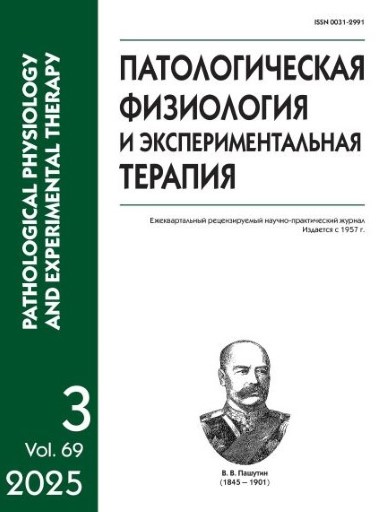Analysis of the dependence of myocardial mitochondria endogenous respiration on physical characteristics of vibration
Abstract
Introduction. The article addresses the problem of qualitative and quantitative assessment of the electron transport chain (ETC) bioenergetics of myocardial mitochondria in experimental animals exposed to vibration. The aim of the study was to analyze the dependence of vibration-mediated changes in some parameters of myocardial tissue respiration on vibration physical characteristics and to justify the role of bioenergetic hypoxia in pathophysiological mechanisms of the interaction of tissue energy metabolism and a physical factor.
Methods. The endogenous mitochondrial respiration rate and sensitivity to inhibitors (amytal, malonate) in tissue homogenate were studied by polarography using a closed galvanic oxygen sensor (Clark).
Results. Multiple comparison of the ETC kinetics revealed a significant effect of 44 Hz frequency vibration on the endogenous substrate oxidation rate in myocardial mitochondria. With a cell protein concentration of 2,4 mg/ml (standart deviation 0,4), the endogenous respiration rate in [ng-atom⸳Omin-1mg-1protein] was 16.3 in control animals with predominating amytal-sensitive respiration; 25.9 with predominating malonate sensitive respiration after 21 sessions; and 17.9 after 56 vibration sessions. Modeling of mitochondrial metabolic state gradations using exogenous oxidation substrates and the 2,4-DNF protonophore disassembler confirmed the preferential activation of succinate-dependent myocardial energetics under the conditions of prolonged vibration exposure.
Conclusion. The analysis of the endogenous respiration rate in myocardial homogenate mitochondria showed that specifically the interaction of several variable characteristics of vibration most significantly contributed to the intergroup variability of endogenous substrate oxidation rates. This interaction revealed signs of bioenergetic hypoxia and allowed analyzing the transformation of energy of the primary physical phenomenon into a biological effect. The obtained bioenergetic parameters (Vend, endogenous respiration sensitivity to inhibitors; malonate to amytal sensitivity ratio; Vsa and Vglu+mal; Vsa-c and Vglu+mal-c), that reflect the volume of high-energy phosphates, availability of energy metabolites, and the quantitative ratio of respiratory enzymes that perform ADP phosphorylation, can be used as variables in adequate mathematical models.






